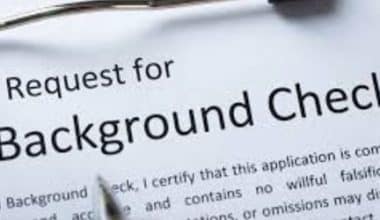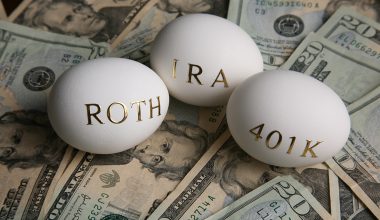It can be stressful to look for a new apartment (or a first apartment). It’s hard enough to find a good space in the right location at a reasonable price, but it can seem impossible if you’re doing it in a competitive real estates market like San Francisco or New York. Don’t get involved in something that isn’t in line with your financial goals. Instead, approach your apartment search more methodically. Start by defining what you can afford. here’s how to calculate how much you should spend on rent after taxes in NYC Using a calculator.
What is the 30% Rule?
Ever heard of the 30% Rule? It’s the idea that you should budget at least 30% of your gross monthly income (before taxes) for housing costs, and it’s practically personal finance gospel.
The 30% Rule is frequently used as a default assumption in rent calculators to determine how much to spend on rent after taxes in NYC. Private landlords frequently require renters’ annual salaries to be at least three times the monthly rent, and mortgage lenders have adopted it as a qualification ratio for providing a loan.
So who precisely is abiding by this rule? Is it also financially prudent to do so?
How Much Should I Spend on Rent
How much should you spend on rent in NYC after taxes? The actual figure will vary depending on your income, where you live, and other expenses in your life. The following is some common sense advice, as well as some additional factors to consider when calculating your living expenses.
#1. The 30% Threshold
Allocating 30% of your net revenue to rent is an excellent place to start. Those who spend more than 30% on living expenditures are termed “cost-burdened,” while those who spend 50% or more are labeled “severely cost-burdened,” according to government studies posted on Census.gov.
When determining your income-to-rent ratio, keep in mind that you should be utilizing your overall household income. If you live with a roommate or partner, consider their income as well to find a rent range that is appropriate for you.
If you’re still unclear about how much rent you should spend in NYC after taxes, use a calculator. Also, if you’re unsure whether you’ll be able to pay your rent, consult a financial advisor before signing a lease.
#2. 50/30/20 Rule
After you’ve established a fixed income-to-rent ratio, use the 50/30/20 rule to complete your budget. This famous budgeting rule states that you should spend 50% of your income on essentials, 30% on non-essential, personal items, and 20% on savings and investments. Rent qualifies as “essential” in this circumstance. This category also includes any expenses that are necessary, such as utilities, food, and transportation.
#3. Costs for Daily Lifestyle
It’s time to construct a moving checklist and plan how you’ll decorate your apartment now that you’ve budgeted for rent and utilities. One of the most shocking aspects of moving out on your own is the exorbitant cost of moving and furnishing a home. It can be costly to make your place right, from kitchen utensils to lightbulbs and everything in between.
Furniture typically accounts for less than 30% of personal, non-essential expenses. Consider planning ahead of time and saving for house furnishings to avoid going into huge debt when it comes time to move out.
Some moving expenses to consider, according to consumer.gov, are:
- First month’s rent
- A security deposit
- Extra rent if you have bad credit
- Utility deposits for electricity, heat, water, etc.
- A credit or background check fee
#4. Stretch your Monthly Budget
If your budget for your dream apartment is a little out of reach, try cutting out unnecessary expenses to see if you can make it work. Look for ways to save money on things like rent, utilities, and insurance.
#5. Factor in Other Costs
Everything from your commute to your workout routine is influenced by where you reside. Consider any additional expenditures (or savings) you may incur as a result of your renting option.
Living outside of the city center, for example, is frequently less expensive. Nonetheless, you could spend hundreds of dollars every month on transportation to and from work and social activities.
Some rentals include utilities such as gas and water, as well as an on-site gym or a laundry and dryer. Consider these benefits when comparing rental costs. A gym on-site, for example, might save you $100 or more per month on a gym membership. In-unit laundry saves time and money over coin laundry or excursions to the laundromat.
#6. Look for Deals
If your budget does not match the rental market in your area, look for ways to minimize costs elsewhere. It’s natural — and prudent — to go to non-essential spending to free up financial space, but you can frequently find savings within your important expenses as well.
- Utilities: Heat, water, and electricity are necessities, while the premium cable is strictly a luxury. Reduce your package to save hundreds of dollars on your cable bill. Or, you can remove the cord entirely and buy a cheap digital antenna to gain access to local stations.
- Insurance: Shop around for the best vehicle insurance rates. According to a 2017 NerdWallet study, skilled drivers could have saved $416.52 a year by shopping around for car insurance.
- Groceries: Develop the habit of meal planning and coupon clipping to maximize your shopping budget.
- Rent: If you live alone, you are responsible for paying your rent and utilities.
Get a roommate and split the expense of a two-bedroom apartment. Looking for a less expensive option? Consider renting a room in a dorm. Don’t overlook your savings to pay more for rent. You will thank yourself later for prioritizing your emergency fund and retirement funds. But, in times of crisis, strategies such as diving into an emergency fund or asking for rental assistance programs may be required to aid you in paying your rent when you can’t afford it.
How much should I Spend on Rent Calculator?
Your monthly apartment rent (without utilities) should not be more than 30% of your total monthly income, as a general guideline. Hence, they built this helpful apartment rent calculator to help you budget wisely. Utilize the methods in our rent calculator to create an effective plan for determining how much rent to pay for your next apartment in NYC.
this rent affordability calculator may be useful As a rent vs. buy calculator. Domu derives the aforementioned rental ranges from a basic formula that yields a lower, middle, and upper rental range. The ranges in this rental calculator do not take into account the debts of other renters.
What is the functionality of the affordability calculator?
We multiply your gross monthly income by 20%, 30%, or 40%, depending on how much you want to spend on rent in NYC. You can use the slider to modify the percentage of your income you want to spend on housing. If you use the additional options, we deduct the rent from your income and subtract your debt, expenses, and savings from the remaining money, depending on which fields you filled in. The last amount shows the money you have left to spend per month.
What percentage of my income should go to rent?
The share of your income that should go towards paying your rent depends on many factors, the most important being your income level and where you want to live. Still, there are a few frequently accepted principles you can apply if you want to figure out a certain ratio of rent to income. For example, the rental income calculator in NYC starts with 30% as a baseline for how much you pay in rent after taxes.
How much should I Spend on Rent After Taxes?
Most Americans waste their budget on three things: housing, transportation, and food.
According to the most recent US Census Bureau data, the average US renter spends about 30% of their gross income on rent. Meanwhile, according to Zillow, residents in some high-cost-of-living cities, such as Los Angeles, San Francisco, and New York, spend more than 37% of their monthly income on rent.
In the United States, the standard measure of housing affordability is 30% of pretax income. However, if you are serious about accumulating wealth, try limiting your rent to 30% of your after-tax income.
You’ll have to rent a less expensive place than if you calculated using your gross income, but you won’t risk overspending. Plus, if you contribute to a pretax retirement savings account, like a 401(k), at least part of your savings will already be covered by the time your paycheck hits your bank account.
Note that when talking about affordability, “rent” means housing costs: rent, maintenance, and utilities. To be considered affordable, your housing costs overall should be less than 30% of your monthly payments.
If your state taxes income, your take-home pay will be lower, resulting in less money to put toward rent if you want to adhere to the 30% standard.
Is the 50/30/20 rule realistic?
The 50/30/20 rule can be a good budgeting method for some, but whether the system is right for you will be determined by your unique circumstances. 50% may not be enough to cover your needs depending on your income and where you live.
Is 50% of income on rent too much?
Yes. The rule of thumb for renting suggests spending no more than 30% of your income on housing each month.
What is the 50-30-20 rule?
One of the most prevalent percentage-based budgets is the 50/30/20 rule. The concept is to divide your income into three areas, spending 50% on needs, 30% on wants, and 20% on savings.
Is $1500 rent too much?
It depends. Spend no more than 30% of your salary before taxes on housing, according to conventional wisdom. That is, your rent should not be more than $1,500 if you make $5,000 per month before taxes.
Is 30% rent realistic?
Yes. Most financial experts recommend that you spend about 30% of your gross monthly income on rent (notice that gross is not the same as net income—gross is your income before taxes).
How much should I make for $2000 rent?
Following the 30% guideline could look like this: You can afford a $3,000 monthly rent if your total income is $10,000 per month. You can afford a $2,000 monthly rent if your gross monthly salary is $6,667.
Conclusion
Consider your monthly income and expenses when figuring out how much you should spend on rent after taxes in NYC. You should not spend more than 30% of your monthly income on rent, and you should consider all factors in your budget, including additional rental costs such as renter’s insurance or your initial security deposit. Determine what you can afford and how much money you want to save to find a rent price that works for you. Once you’ve determined the appropriate rent, you may concentrate on increasing your funds to achieve your long-term goals.
Related Articles
- Business Utilities: Cost and Comparison of Utilities for Business in UK
- NYC SMALL BUSINESS GRANTS: 15 Most Choicest Options Available
- RULE OF 72: Meaning and Formula
- CPA Firm: A Comprehensive Guide For The Best Results
- BUYING AN APARTMENT: Step-by-step Beginners Guide






